What could be nicer on a warm, sunny spring day than to enjoy a leisurely wander along a canal towpath. With this in mind, we jumped in the car and drove to Newbury, a market town in West Berkshire. The town is approximately 30 minutes drive from Oxford and about an hour by train from London.

We parked on the edge of the town in the Newbury Goldwell car park beside the leisure centre which offers unlimited free parking on Sundays (£1 for four hours the rest of the week) and is an ideal starting point for a gentle stroll along the canal.
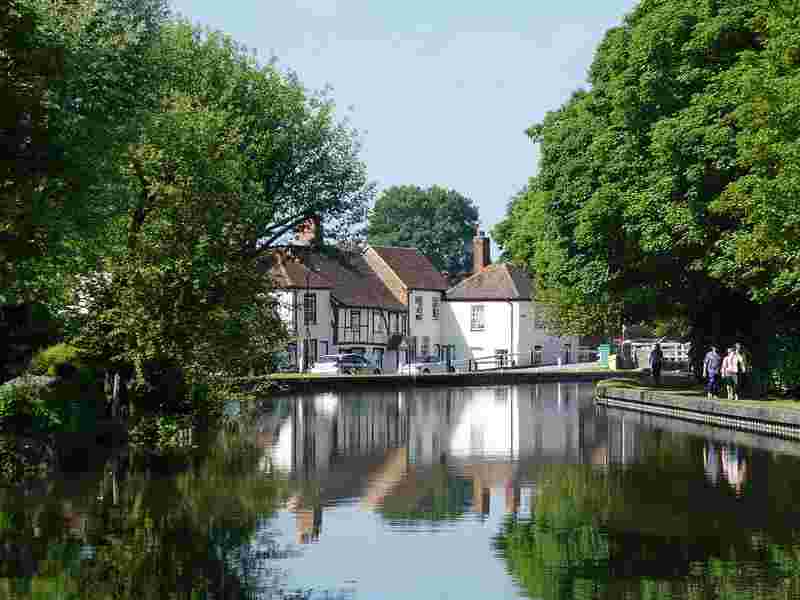
Leaving the car park we took a right turn along a tarmac path crossing two footbridges to reach the towpath of the Kennet and Avon canal. From the bridge we could see several brightly coloured narrowboats moored on both banks, some of them with flower pots on their roofs. From here, we headed in an easterly direction with the canal on our left, along the towpath towards the bustling centre of Newbury.
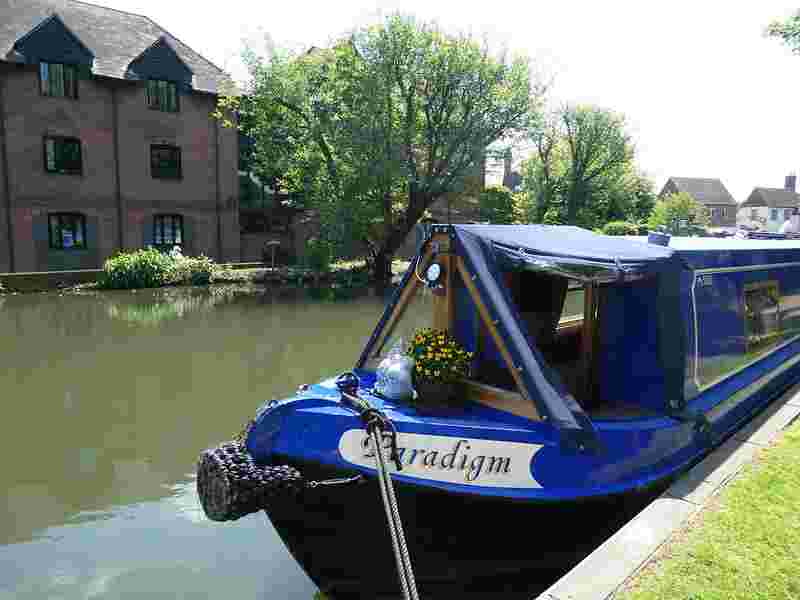
Development of the canal dates back to the early 18th century when the River Kennet was made navigable for barges between Reading and Newbury by dredging, cutting lengths of canal and building a series of locks. The canal was further extended all the way to Bath in 1795 connecting to Bristol via the River Avon.
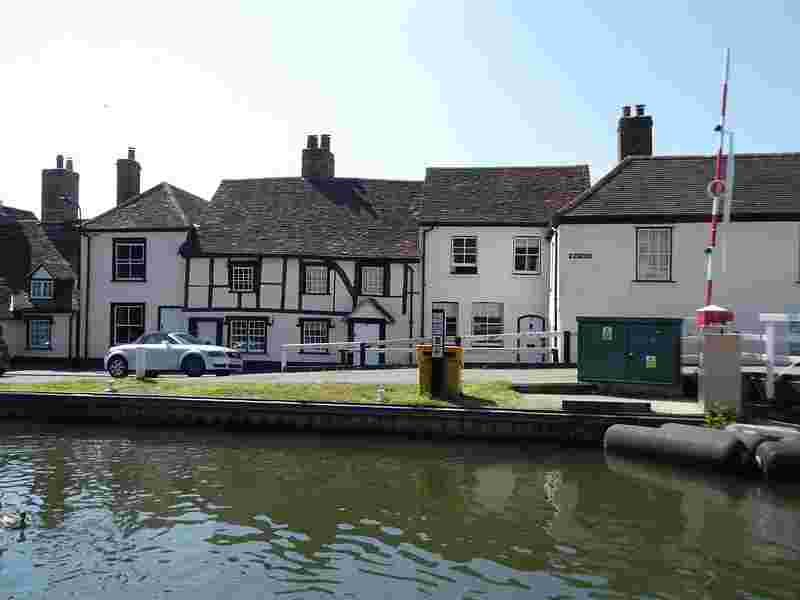
When the canal first opened it formed a key trade route connecting to the two ports of Bristol and London via the River Thames. The coming of the railway signalled the end of the canal’s prosperity as it offered quicker journeys for both goods and people. Canal trade then gradually decreased and by the early 1950’s the canal had fallen into disrepair and it was no longer possible for a boat to pass between Newbury and Reading. The Kennet & Avon trust was formed in the 1960’s reversing the decline and enabling the canal to re-open for pleasure traffic in the 1990’s.
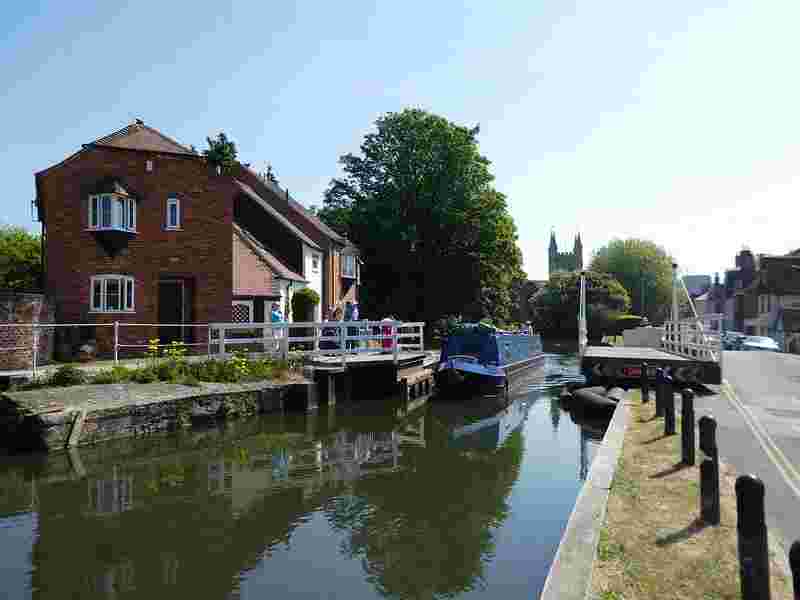
Walking a little further, we came to the Mills Swing Bridge where the towpath crosses to the opposite bank. As we approached, the bridge was being operated by a boater who just needed to insert a key and press a few buttons to lower the barriers. Several people had gathered on either side of the bank not only waiting to cross but also enjoying watching the boat pass through. A few minutes later the bridge was securely back in place allowing us to cross and continue along the towpath towards Newbury Lock.

Overlooking this lock we spotted a very attractive pub aptly named The Lock, Stock and Barrel. It’s outdoor terrace was filled with people enjoying drinks and bar snacks in the warm sunshine. The road crossing Newbury Bridge is a wide, semi-pedestrianised shopping street (vehicles only allowed in the evenings). Along here are a mix of local independent shops and the usual high street names. By chance, we had arrived as the monthly artisan market was taking place (last Sunday of the month) with arts and crafts, street food and children’s activities.

Arriving at the tree lined market square, numerous historic buildings have been retained including the medieval Cloth Hall which is now used as an arts venue and theatre. The market has a long history and is believed to have taken place since Anglo-Saxon times. Nowadays markets take place on Thursdays and Saturdays but as we were visiting on a Sunday the square was empty. A good reason to return one weekend to enjoy wandering around its stalls.
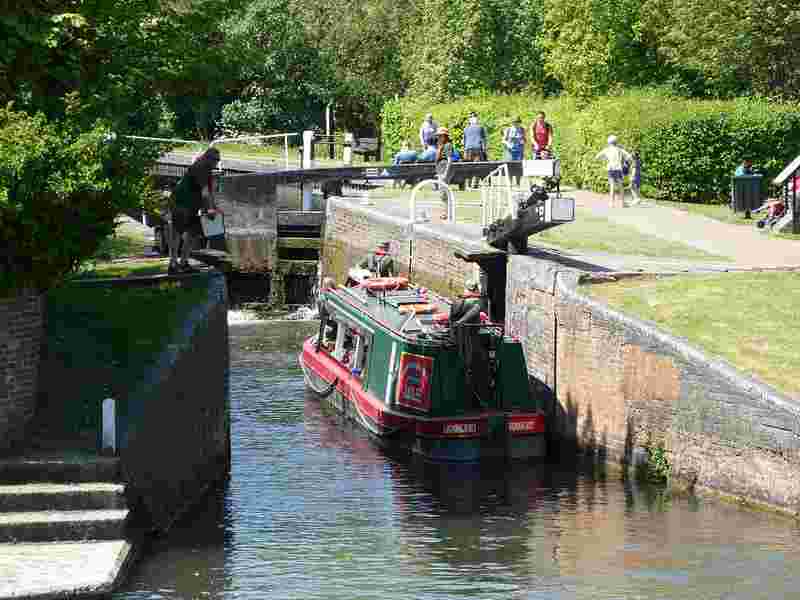
After finding a cosy pub for some lunch we returned to the car along the canal towpath and noticed the Kennet & Avon Canal Trust Jubilee narrow boat passing through the lock. Pleasure trips operate at weekends and also on Thursdays during the summer months. More information can be found on its website, here.
If you have enjoyed reading this post you may also like:
Andover and the Mottisfont Rose Garden
Suggested accommodation near Newbury:
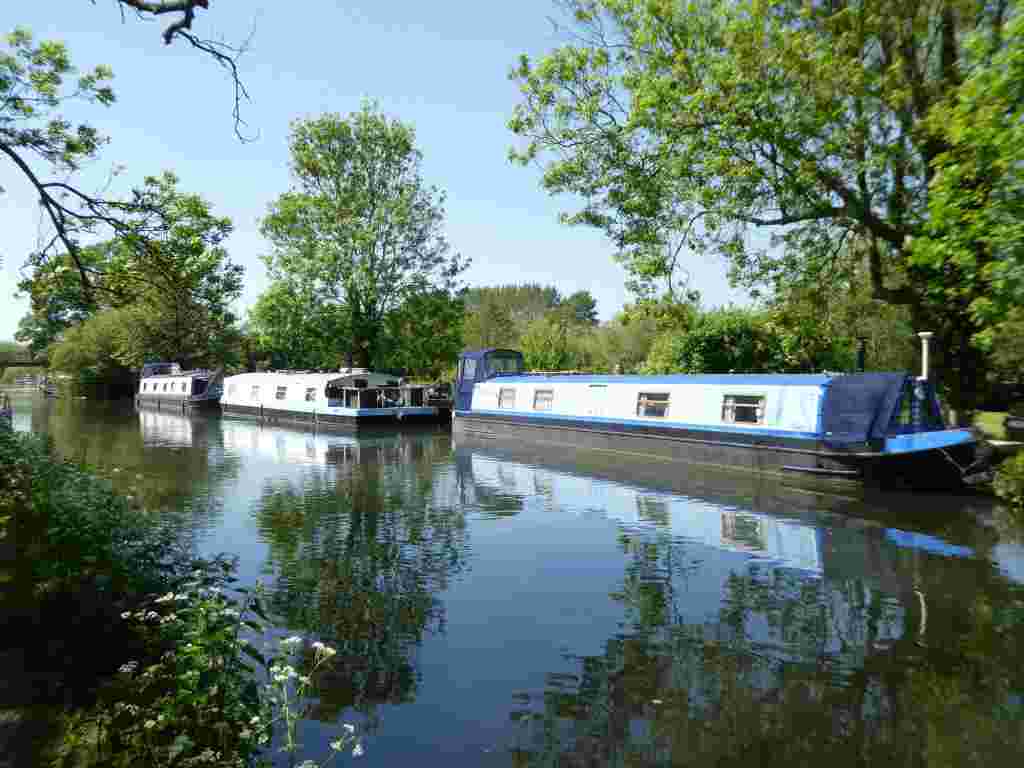

Leave a comment